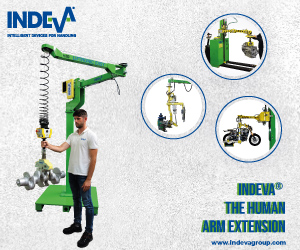Articles
Wireless Control: Automated Guided Vehicles
Fori Automation, the renowned AGV (automated guided vehicles ) maker, has added a wireless operation through Profinet to its industrial transport vehicles, thus enhancing plant safety and providing operational flexibility to its consumers. Grant Garke has made as wonderful assimilation of the best in this and we shall discuss them here.
A Sage survey that had been carried out in March, pointed to the fact that 46% of factory operation managers invest a great deal in resources that support top priorities like attaining higher production rates. Technology innovation in automation might be a factor to boost productivity.
Forri Automation for that matter is of the opinion that its customers are gradually becoming more and more open to understand the possibilities of wireless control. The total available floor space can now be fully utilized through such technology in automation.
In some places, AGVs enhance delivery speeds for suppose a 30 ton , 60 ft long wing at a Lockheed Martin aircraft plant facility, thus necessarily aiding speed in production.
However a better time bound production returns is not the only priority with users of AGVs. Operational flexibility and the feasibility of being able to put more number of vehicles on the plant floor are also advantages of the AGVs. Reaching higher production targets is the goal as well as the result of such an arrangement.
AGVs uses ‘ four Hall effect sensors’ to make sure that an accurate positioning and a definite magnetic ( 6mm wide magnetic bar cut out on the floor) track guide in any direction, conducive to its performance is maintained.
Another thing worth mention is that these AGVs work on real time wireless in an environment where security is top priority and accidents can happen any time.These AGvs are made so that it can navigate not only the floor but also drawbridges, overhear cranes, and other elevated things that the plant may have.Additionally, these Agvs constantly communicate with other plant systems and these need to function without any interruptions.
In the setting up of AGV, Profinet has been the most favored option for industrial network and Siemens remains the choice for all automation, control and network hardware, data transmission errors thus being kept under control.The spectrum used is the 5 Ghz spectrum on an industrial Ethernet network because of its security and non- interference with the 2.4Ghz, commonly used for mobiles.The AGV has three layers in its architecture: the control layer with an onboard control and also a separate human machine interface (HMI), a plant coordinator that acts as a “traffic cop”, and the manufacturing and execution system (MES).
Now, both safety and control devices communicate through Profinet to Scalance X switch that is connected to a wireless client. This particular onboard client then communicates over the 5 Ghz spectrum to fixed access points situated at intervals throughout the plant setup. These points are purposely located at rafters of the plant or ceilings for a maximum range.
What happens next is a series of technical procedures that is outside the scope of this article. A few popular applications have been discussed below:
- Continuous movement of materials over a distance.
- Continual delivery of stable loads
- Used when a punctual delivery is crucial and systems have to be efficient to achieve that
- Operational flexibility: two shifts
- Automation setups where tracking is important
source: automationworld




